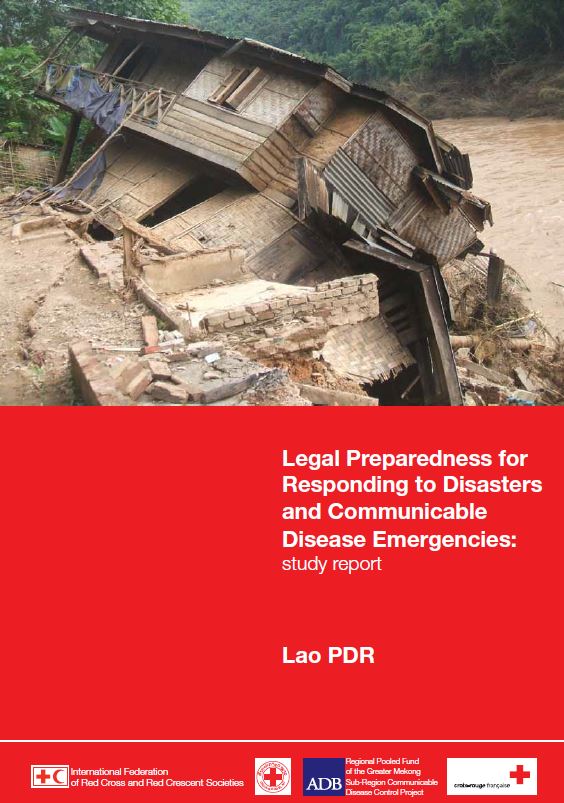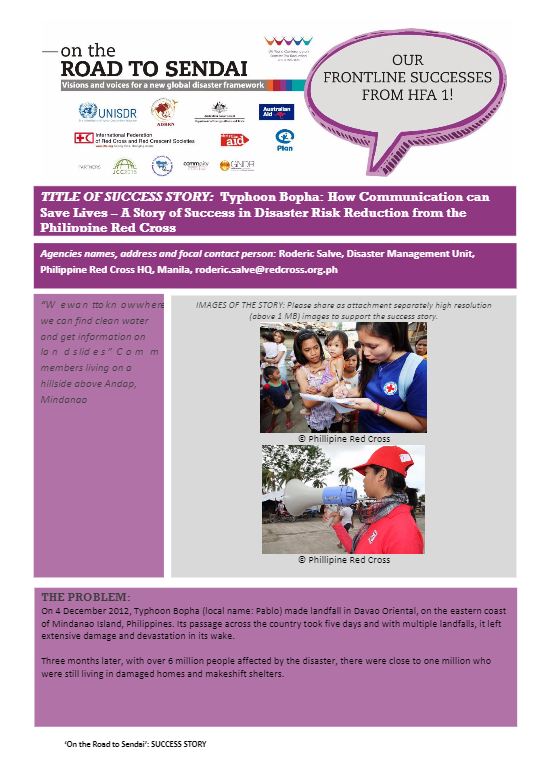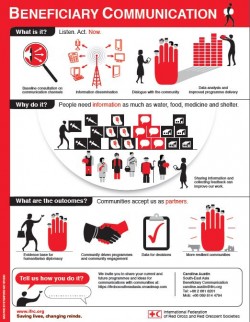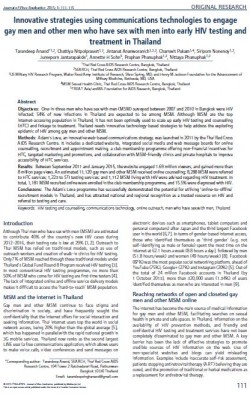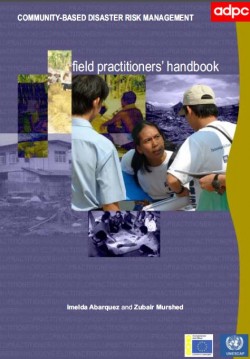Beneficiary communication infographics
Purpose:
Overview:
Usage: Training
Audience: Communication staff, Volunteers
![]()
Innovative strategies using communications technologies to engage gay men and other men who have sex with men into early HIV testing and treatment in Thailand
Purpose:
This document reviews the impact achieved by ‘Adam’s Love’, an integrated public–private sector web-based communications strategy launched by the Thai Red Cross AIDS Research Centre in September 2011. Specific objectives of the strategy included scaling-up early HIV testing and treatment, increasing HIV-related awareness and knowledge, and positively influencing attitudes, beliefs, and behaviours about HIV among men who have sex with men (MSM) in Thailand.
Overview:
Adam’s Love involves a website, social media and web message boards for online counselling, recruitment and appointment making; a club membership programme offering non-financial incentives for HTC; targeted marketing; and collaboration with MSM-friendly clinics and private hospitals to make HTC services more accessible.
Adam’s Love was able to recruit MSM that are at high risk of contracting HIV into HIV testing and counselling (HTC) services. Of the 1,181 MSM who accessed HTC services, almost half did not use condoms consistently and about one-fifth had between five and 20 sexual partners in the previous month. Through the programme, 16% of previously undiagnosed HIV cases were identified.
The majority of MSM recruited online into HTC services in the programme were young (half were 14–25 years old). Online recruitment was a channel to reach out to closet MSM as one-third (34%) were discreet about disclosing their gender identity.
Some evidence suggests that MSM who undergo HTC are likely to return for repeat testing. In fact, 66% of MSM who presented for HTC in the programme had planned to have HIV testing again in the next six months.
With internet-accessing behaviour shifting away from desktops, creating strategies targeting mobile and tablet users is essential.
Usage: Learning from experience
Audience: Communication staff , Health practitioners, Volunteers
Reference: Anand, T., Nitpolprasert, C., Ananworanich, J., Pakam, C., Nonenoy, S., Jantarapakde, J., & Phanuphak, N. (2015). Innovative Strategies Using Communications Technologies to Engage Gay Men and Other Men Who Have Sex With Men Into Early HIV Testing and Treatment in Thailand. Journal of Virus Eradication, 1 (pp. 111-115). Available from: bit.ly/1BR2RM1 [Accessed: 26 December 2015].
![]()
Community- Based Disaster Risk Management – Field Practitioners’ Handbook
Purpose
The purpose of this Community-Based Disaster Risk Management (CBDRM) Field Practitioners’ Handbook is to help equip CBDM or CBDRM practitioners with theories and practical tools that can be applied in community work.
Overview
The handbook is divided into three parts:
- The first part clarifies the basic concepts of CBDRM such as disaster risk terms and project management concepts.
- The second part covers essential tools for implementing various stages of the CBDRM process. It provides step by step instructions to facilitate specific activities. It includes narrative instructions, tables and charts. The topics covered are Participatory Project Cycle Management, Participatory Disaster Risk Assessment and Action, Formation and Training of Community Disaster Risk Management Organisations and Participatory Monitoring and Evaluation.
- The third part discusses tools on two cross-cutting themes related to CBDRM – Gender Conscious Approach to CBDRM, and Disaster Risk Communication (DRC). Three key concepts have been introduced in this handbook. These are: Community-Managed Implementation; Participatory Disaster Risk Assessment and Action; and Gender Conscious Approach to Disaster Risk Reduction.
Usage: Guidance for project implementation
Audiences: Technical staff
Reference: Abarquez, I. & Murshed, Z. (2004). Community-based disaster risk management: Field practitioners’ handbook. Asian Disaster Preparedness Center.(ADPC). Pp.1-163. Available from: http://www.adpc.net/igo/contents/Publications/publications-Details.asp?pid=428#sthash.Mr5hK3o0.dpbs. [Accessed: 19th September 2015].
![]()


